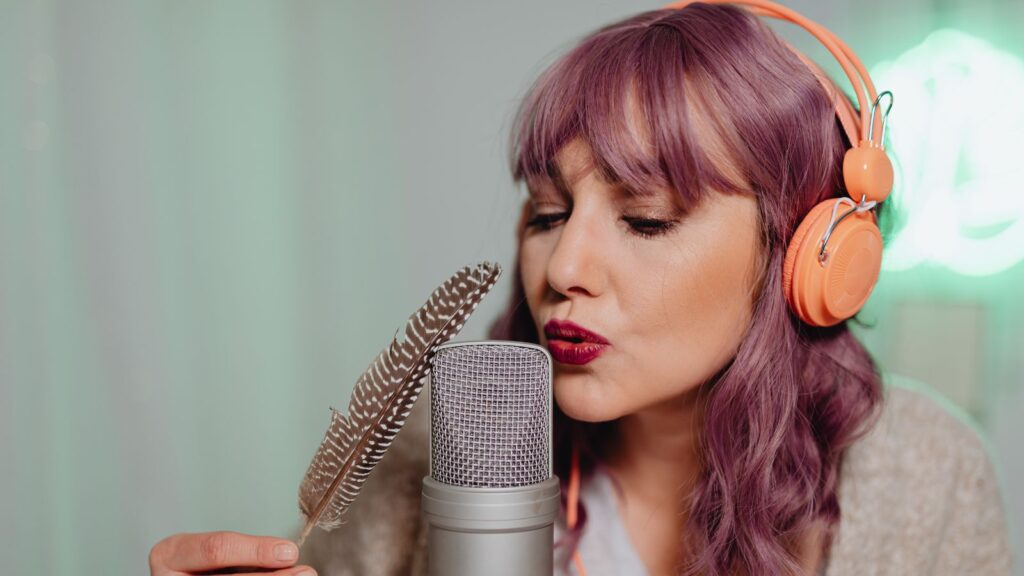Over recent weeks, I’ve been really busy.
Like, really busy.
I don’t say that as a badge of honor, but just to relate my reality. When I finally was able to slow down a bit, I noticed that some of the birds already have come back for spring. Their happy chitter left me missing my old music life and gave me the innate understanding that my current environment wasn’t serving me all that well.
In the world of ASMR, to each their own

Not long after the birds sang at me, a friend encouraged me to look more deeply into Autonomous Sensory Meridian Response (ASMR). Experts describe ASMR as a goosebumps or tingling sensation stimulated by relaxing sounds and visuals.
In total transparency, I find a lot of the ASMR content out there to be just plain weird. You won’t find me falling asleep to a video of someone murdering me in role play. As a writer, however, I might be convinced to sit through some Tingle Writer videos, not only because of the antique aesthetic, but because I associate all the sounds in it with the positive expression and creativity I will defend until the day I die.
It goes both ways — the videos of things fitting perfectly into other things or the combination of fireplace sounds and crickets that I absolutely love might seem irritating to someone else. Because I understand enough about neurodiversity to grasp that, because people are all wired a little differently, I can respect that people need and will respond to different things to feel good. As long as you and others are safe, you do you.
A sign of growing stress and sensory deprivation
The idea that elements like sound and touch can activate the parasympathetic nervous system and even be part of serious mental health treatments isn’t new. I was hyperaware of that as my fire and crickets helped my body stop constricting so much. Yet, the more I started listening, the more I started thinking critically about why ASMR has exploded as a YouTube genre.
In an article for MUD/WTR, author Dr. Craig Richard posited that ASMR is popular specifically because it helps people who are struggling with stress and sleep issues — the world is filled with pressure and elements that can create anxiety, and ASMR offers a practical way to cope. At the same time, we still crave a sense of community and belonging despite the fact it’s harder to connect deeply with other human beings than it used to be. Richard, who conducted fMRI research around ASMR, also explains that ASMR can stimulate the same regions of the brain that light up during affiliative behaviors between individuals.
So, we’re not just decompressing. We’re also finding an artificial way to meet the brain’s need for intimacy.
ASMR mainly provides auditory and sensory stimuli. But if you accept that people have very little time to relax, it’s reasonable to assume that people also wouldn’t be taking in enough other forms of sensory stimuli.
When’s the last time you really stopped to enjoy the smell of your coffee or the proverbial flower?
How long has it been since you felt the tension melt as you ran your hand over a pet’s fur?
Do you even know what last night’s dinner really tasted like and savor that, or did you just inhale it and move on?
Let’s go beyond Band-Aids
I’m happy that people have something that can help them chill out and feel better. But I can’t help but feel like the growth of the ASMR industry is yet one more sign that, in our society, people aren’t really able to be psychologically and physically safe. I wonder, too, what will happen to individual and long-term collective neurological development if we continue to sit in a world where deprivation and pressure are the norms. I’d rather that we restructure and get to the root of our problems instead of relying on ASMR coping Band-Aids.
A reason not to despair
Despite my worries, the bright side is that there are so many ASMR creators. Sure, plenty of them are putting up content because it brings in a buck. But a lot of them, like therapists, genuinely want to help. They understand that, until we do restructure and get to the root of our issues, people need small, reliable, easy-to-find lifelines. As long as there are people out there working with that kind of compassion, I have a little hope.
